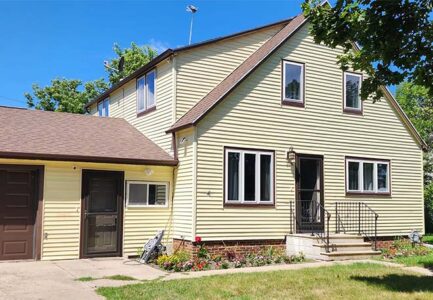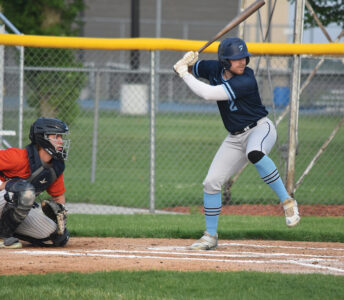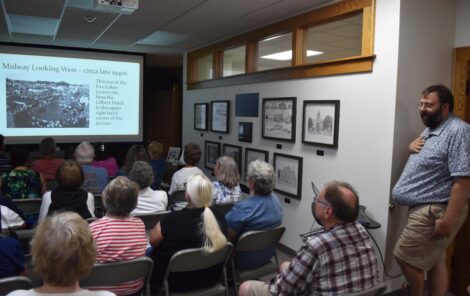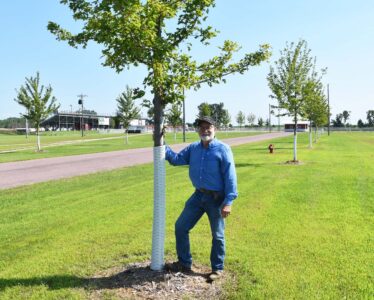MCHS recaps 160-year fair history
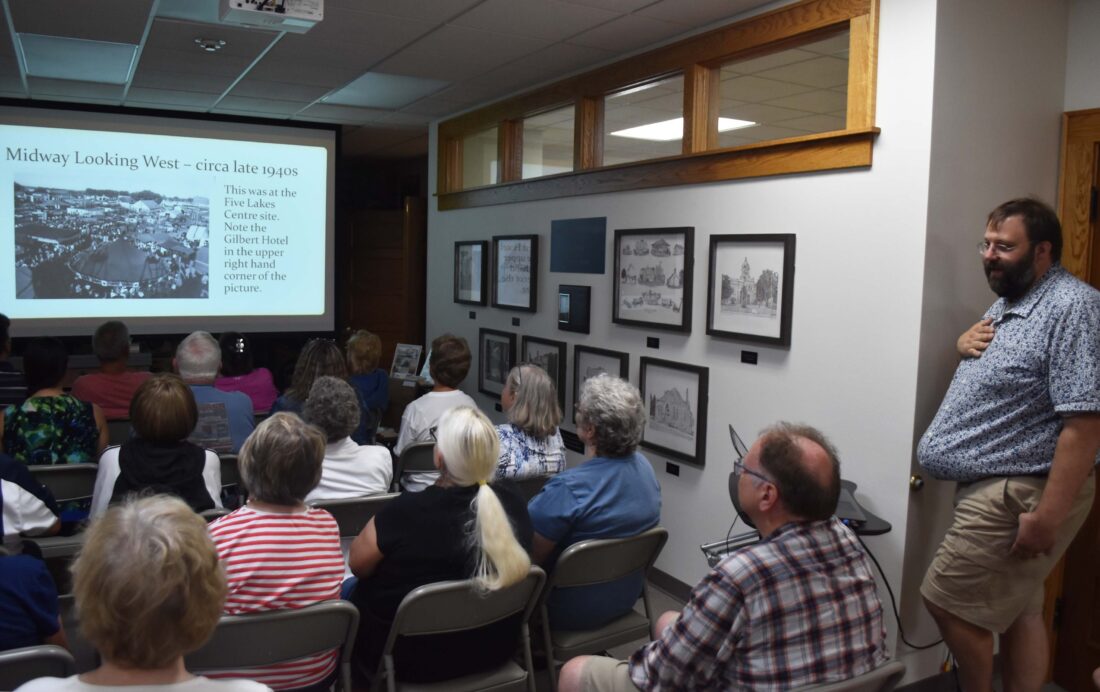
ABOVE: Martin County Historical Society Curator James Marushin presents photos and tidbits about the full history of Martin County’s Fair during a presentation earlier this week. The fair returns for its 160th year this coming week.
FAIRMONT – Taking advantage of the Martin County Fair’s 160-year history, the Martin County Historical Society (MCHS) showcased its information during a presentation on Tuesday.
Curator James Marushin led the exploration. In the first three years of the fair’s existence, he said, the location where it took place differed each year.
“The first Martin County Fair was held at the Martin County Courthouse site in 1865,” he said. “The second fair was held where SMEC/Central School is today. The third fair was said to have been held in what is now downtown Fairmont.”
During the first year of the fair, Marushin said shenanigans ended up disrupting part of the fair.
“An eyewitness to that first fair stated that exhibits included a few pumpkins and cabbages, but that one of the show cows got loose and ate some of the cabbage,” he said.
Pictures of the grandstands and Floral Hall in 1890 were shown. Marushin said back then, an American flag would be raised above Floral Hall to start the festivities.
A 1902 complimentary fair pass showed the fair board was at that time called the Martin County Agricultural Society, and the fair took place around the third and fourth weeks of September. At the time, horse races were conducted, and winners could secure anywhere between $25 and $100.
“Horse Racing was one of the big draws very early on that brought a lot of people in,” Marushin said.
By 1944, horse races were on their last legs. That year’s fair was the last time it was featured, as Marushin said other spectacles took hold.
“There were other things that drew crowds better,” he said. “The Midway scene started to really grow.”
John Livermore entered the story in 1949, as Marushin recounted his charge toward making the Martin County Fair free.
“His first attempts were unsuccessful, but he vowed to ‘Clean out the dead wood on the Fair Board,'” Marushin said. “Finally, he was successful in that. Attendance and participation then greatly improved.”
With this improvement, bold goals were made known in a 1951 advertisement for the fair, which was labeled “The Fastest Growing Fair In The U.S.”
“They had 50,000 in attendance in 1949, 70,000 in 1950, and their goal for 1951 was 100,000 in attendance,” Marushin said. “That’s an average of 25,000 people per day, or two and a half times the population of the city.”
New fairgrounds were chosen in 1964, with an outline of the then-empty 91 acres running in the July 8, 1964 Sentinel. The new site would be ready for the 100th anniversary in 1965, in which an advertisement proclaimed both stock car and chuck wagon races on the new race track.
The grandstands were enhanced in 1967, adding a 2,500-seat section from the Minnesota Vikings.
“It came from Metropolitan Stadium in Minneapolis. As they were remodeling the Met, they were getting rid of some of the bleachers, and those were brought down here to Fairmont. That gave the grandstand a seating capacity of about 7,500 spectators.”
Among some miscellaneous photos exhibited was a man in an animal show attempting to ride a Zebra.
“They do not tame very well, so that must have been an interesting time for him,” Marushin said.
The presentation wrapped up with some shots of music acts performing at the fair, including Mel Tillis, The Blackwoods and The Statesiders. Marushin recounted perhaps the busiest day in recent fair history, when what had been a little-known band when booked took the stage Thursday in 2011.
“The Band Perry came in 2011,” he said. “They weren’t originally the headliner, but they blew up over the year from the time they were booked. That was probably the most packed day I have ever seen at the fair. You could barely move. They stayed until about 3 or 4 in the morning, signing autographs and talking to fans.”
This chance occurrence was one Marushin said somewhat overshadowed the artist who had been booked in the traditional “headliner” spot that year, Lee Brice.
Information and advertisements for this year’s fair can be found on pages 1C to 4 C of today’s Sentinel.

